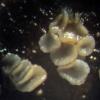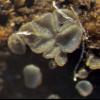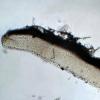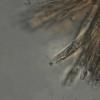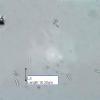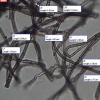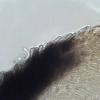
24-12-2025 17:08
Hulda Caroline HolteHello, I have found this propoloid ascomycete on

21-12-2025 09:32
Hello.A tiny ascomycete found embedded in wood in

21-12-2025 21:32
Pol DebaenstHello, Garden, Burgweg 19, Veurne, BelgiumOn 10/1

22-12-2025 23:38
Patrice TANCHAUDBonsoir, récolte sur un mur en pierre, apothéci

22-12-2025 00:47
Patrice TANCHAUDBonsoir, récolte à proximité du milieu dunaire
 Hello dear colleagues and friends!
Hello dear colleagues and friends!Here is an interesting Mollisia/Pyrenopeziza from Ukraine. The specimen is dried, I hope for Mollisias it is not so critical as for other groups. With a Gminder's key I had a M. perparvula, but nevertheless Mollisias are difficult group and I cannot be sure.
The substrate is a twig of deciduos tree, ca 1 sm in diam.
Fruitbodies are light grey. KOH reaction is bright yellow, quickly disappearing in a mount.
Subhymenium hyaline, marginal cells are short, 2-3-celled
Asci with croziers, IKI bb (2 or 3), 49-63*4.7-5.4 um. Paraphyses filiform.
Spores 8.3-10.7*1.8-2.45(3) um, with scattered oil droplets or not.
Subiculum abundant, ca 3-4 um wide.
See photos attached. What do you think?
With best wishes,
Irina Morozova

with a yellow reaction it cannot be a Pyrenopeziza. And likewise with such subiculum. But more I cannot say.
Zotto

Differences between Mollisia/Pyrenopeziza/Tapesia are still not very clear for me.
Irina

Pyrenopeziza never contains refractive vacuoles (which are responsible for the yellow KOH-reaction), and these you would much better see with fresh apothecia.
Zotto
